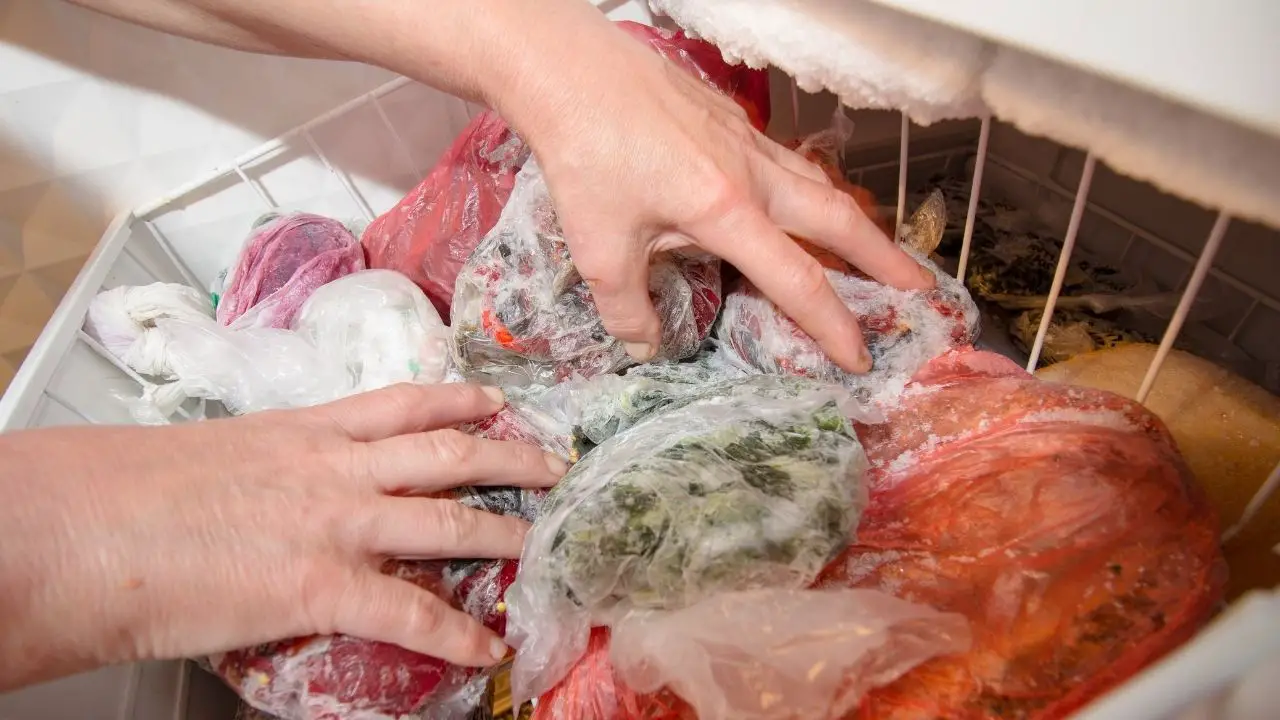The majority of newer fridges and freezers are frost-free, which means that they do not need to be manually defrosted. However, if you do have a fridge freezer that has turned into a massive block of ice, then there is no way around it, and you need to defrost it.
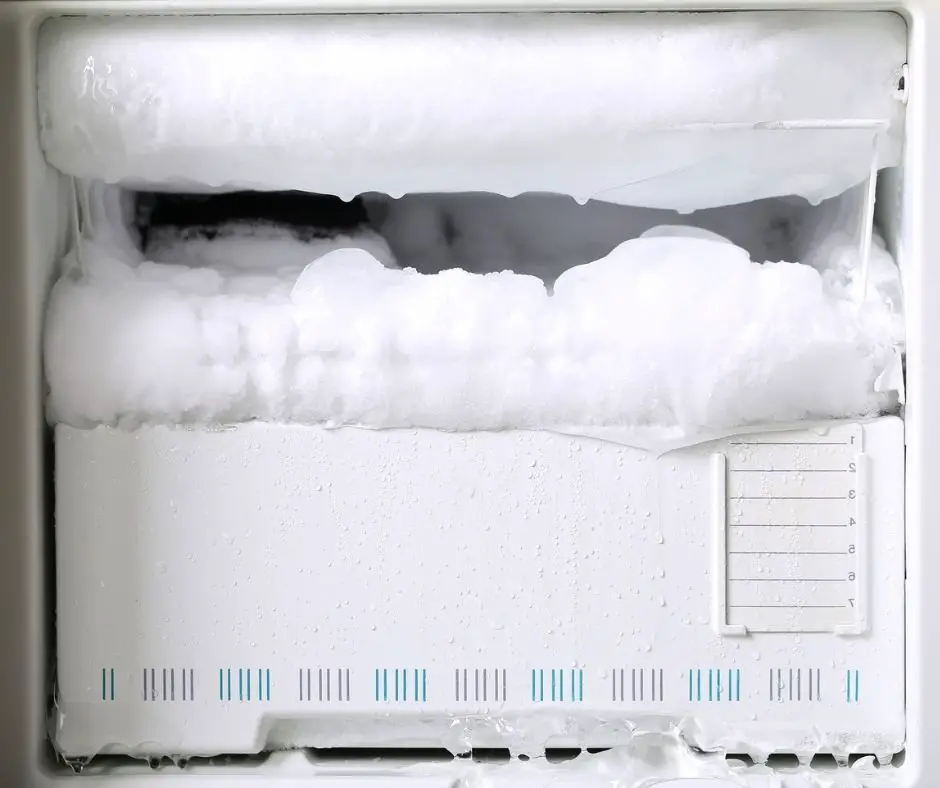
But what do we do with all of the food in the appliance while it is being defrosted?
Here are some tips to help you keep food cold and safe when defrosting the freezer or fridge.
Did You Know? Excessive ice in a refrigerator can drastically limit its effectiveness, making the appliance work harder and increasing its electricity consumption. Ice build-up can also obstruct air circulation, which prevents the temperature from being consistent.
Keeping Food Safe During The Refrigerator Defrost
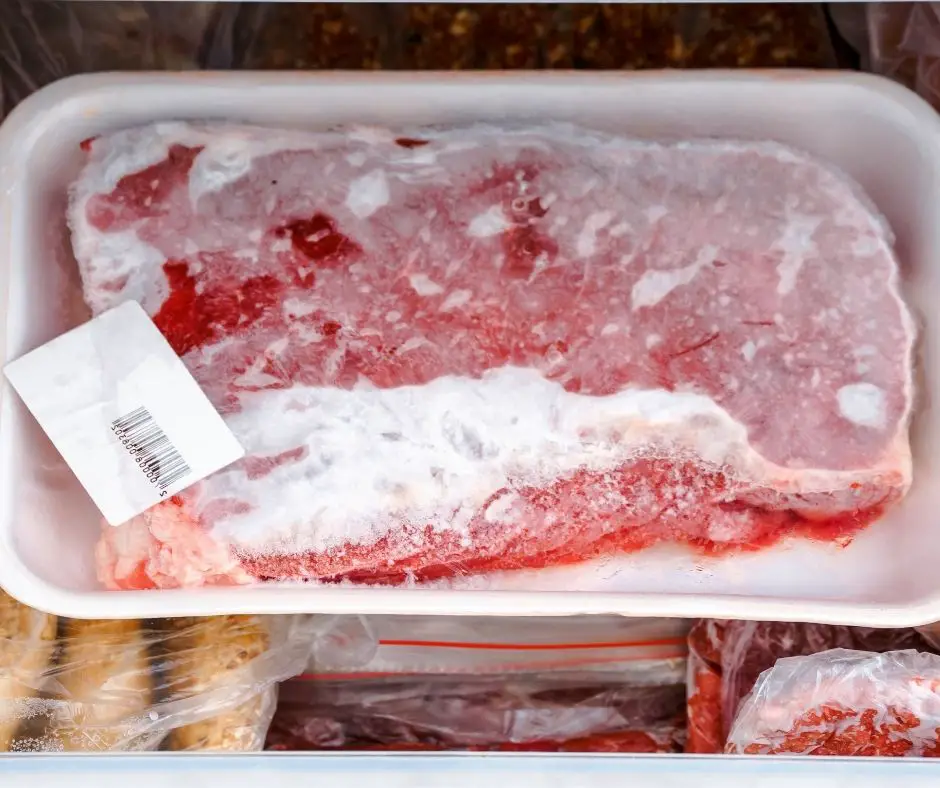
Remember, you want to keep your perishable food out of the food danger zone while waiting for the fridge to defrost. The food danger zone is between 41 °F and 140 °F (5°C and 60°C). Between these two temperatures is when bacteria reproduce at dangerous levels if the food is kept there for more than 2 hours.
So, basically, you either keep it cold or cook it.
When it comes to your frozen foods, you want to keep them frozen while defrosting the freezer. If it thaws and you can see the food visibly defrosted, it has probably reached 41°F, so you have to cook it before re-freezing it or eating it straight away.
However, if the food is not completely defrosted, you can re-freeze it or store it in the fridge for up to two days before it has to be cooked or thrown out.
Also, be mindful of cross-contamination of the foods. As you would not put the raw meat next to cooked meat in the refrigerator, you should not do it while temporarily storing it outside the fridge.
Top Tip. Ensure your fridge freezer is cold again before putting any food back in it. This could take a few hours once turned back on after defrosting. Do check that the food you’re putting back in is still frozen. If you find any meat or fish that is fully defrosted, cook it straight away or throw it out.
There are several ways to keep food cold or frozen while not in the fridge or freezer.
1. Plan The Fridge Freezer Defrost
It is best to plan ahead when defrosting your fridge freezer. About a week before you plan on defrosting your appliance, use up as much food as you can. Ideally, you want your fridge to be as empty as possible when defrosting it. This will make the process faster and limit any food that could spoil and go to waste.
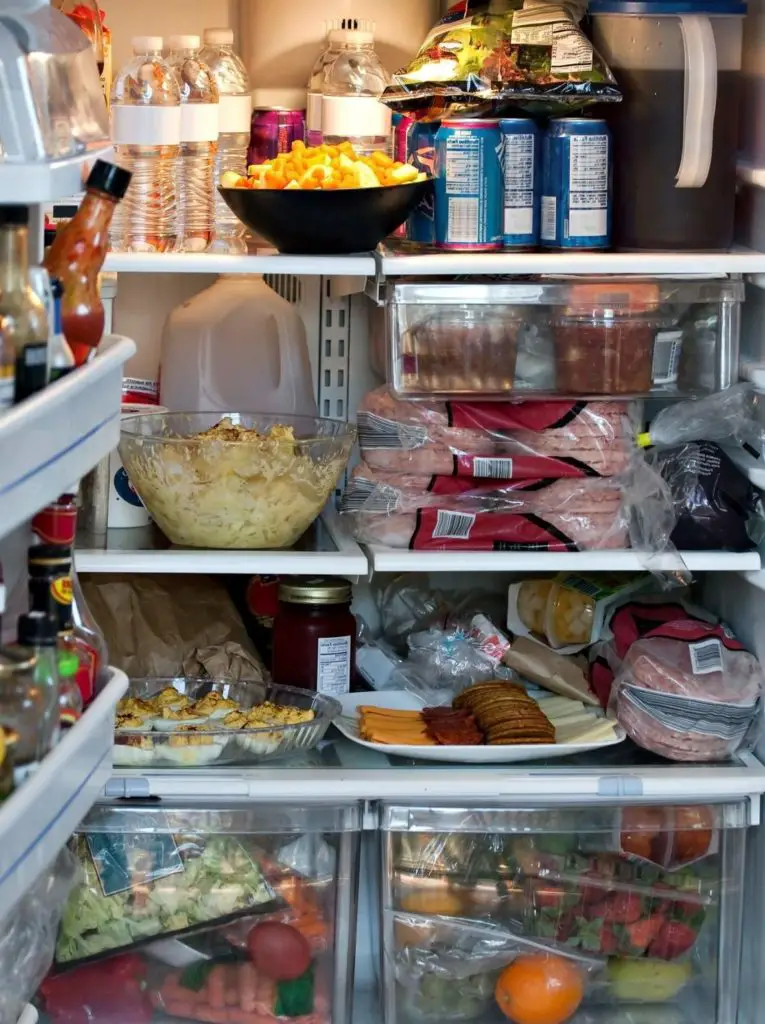
This is also a good time to throw away any forgotten and out-of-date food items that have been left at the back of the fridge for months and most likely will never be used.
Did You Know? The time taken to defrost a freezer varies according to the size of the appliance and the thickness of ice formed within it. Typically, the average freezers will take 4-24 hours to defrost fully. A heat source like a fan or a blow dryer may be needed to speed up the melting of the ice.
2. Use A Cooler
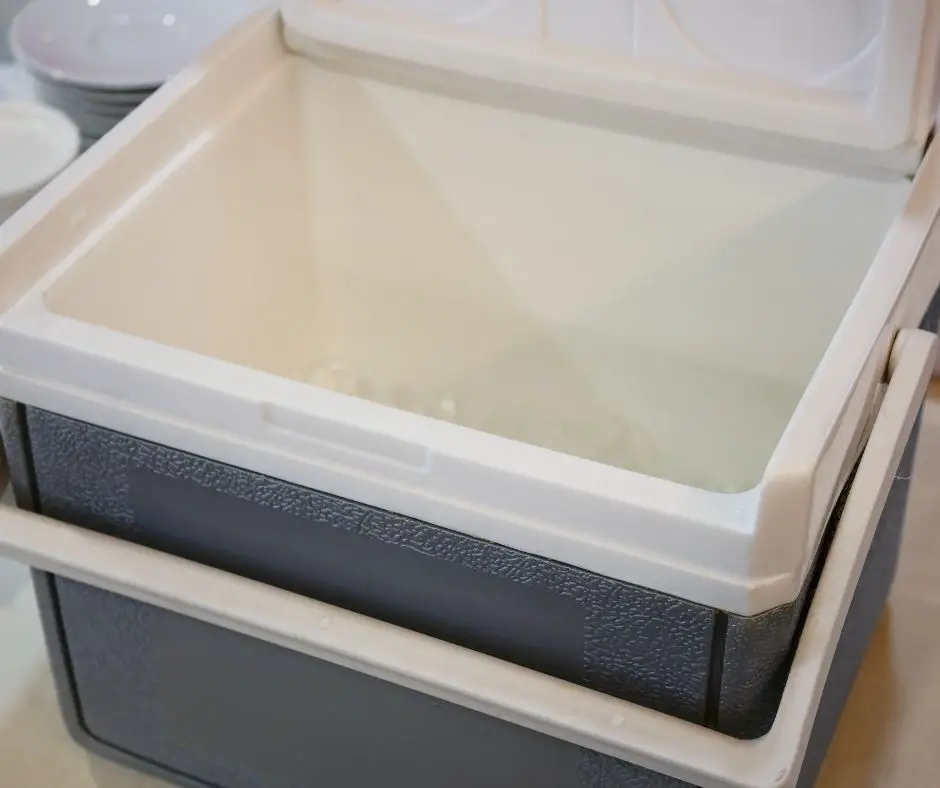
One of the best ways to keep your food cold and fresh is using a cooler. Many people have coolers for camping or cookouts, so these would be great for the task at hand.
Your priority should be to keep frozen foods frozen, so empty the items from the freezer into the cooler first. Fill the cooler as full as possible. Try to keep all the frozen goods together, as this will help them stay frozen longer.
Top Tip. If you only have a few frozen items, wrapping them in thick layers of newspaper will also help slow the thawing process.
Unlike frozen fruit, ice cream and meat and fish products need a bit extra attention. They should be kept well frozen because bacteria start to multiply quite quickly once meat begins to thaw.
Keep your filled-up cooler away from sunlight or radiators. If it’s colder outside than in your house, keep it outside in the shade, especially if you are using a cooler bag or temporary Styrofoam cooler. Styrofoam coolers don’t keep food as cold for as long as more rigid insulated coolers.
Unfrozen, refrigerated foods should be kept in coolers with cooler packs or some ice to keep their temperatures low. Or, if there is some room, you could add them to the cooler together with all the frozen foods from the freezer compartment.
If defrosting takes a while, keep a thermometer in the coolers, so you can ensure your food is staying at a safe temperature.
Many people own coolers but don’t use them very often. Before buying a new cooler just for defrosting your fridge, ask around to see if anyone will let you borrow one. Odds are your friends, family, and neighbors will have more than enough coolers to preserve your goods for a day.
Read Also: Your Fridge or Freezer Door Was Left Open All Night — Now What?
3. Use An Ice Bath
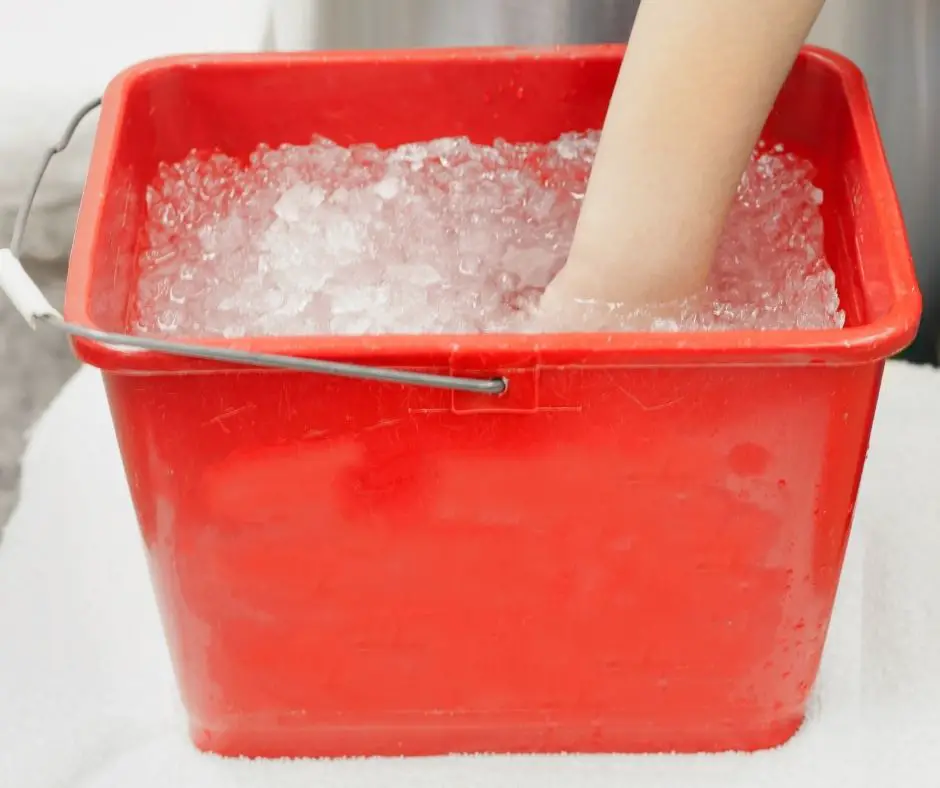
The concept of an ice bath is simple—you fill a container with ice and cold water and then put the food in it to keep it cold.
This is a good alternative if you don’t have a cooler. All you need is a big container that can hold water. Good options are bowls, plastic storage boxes, and even a bathtub or a kitchen sink.
Using the ice bath method will require lots of ice. Keep in mind if you are defrosting your freezer, you might not have a place to store extra ice. You may have to make frequent visits to the store to restock ice.
The kitchen sink full of ice will melt in approximately 4-6 hours, so technically, that should give you enough time to complete the defrosting and get all the food back into the fridge.
To avoid a soggy mess, make sure whatever food will be in the ice bath will be in a waterproof container like a plastic sealable bag or Tupperware box.
4. Place The Food Outside
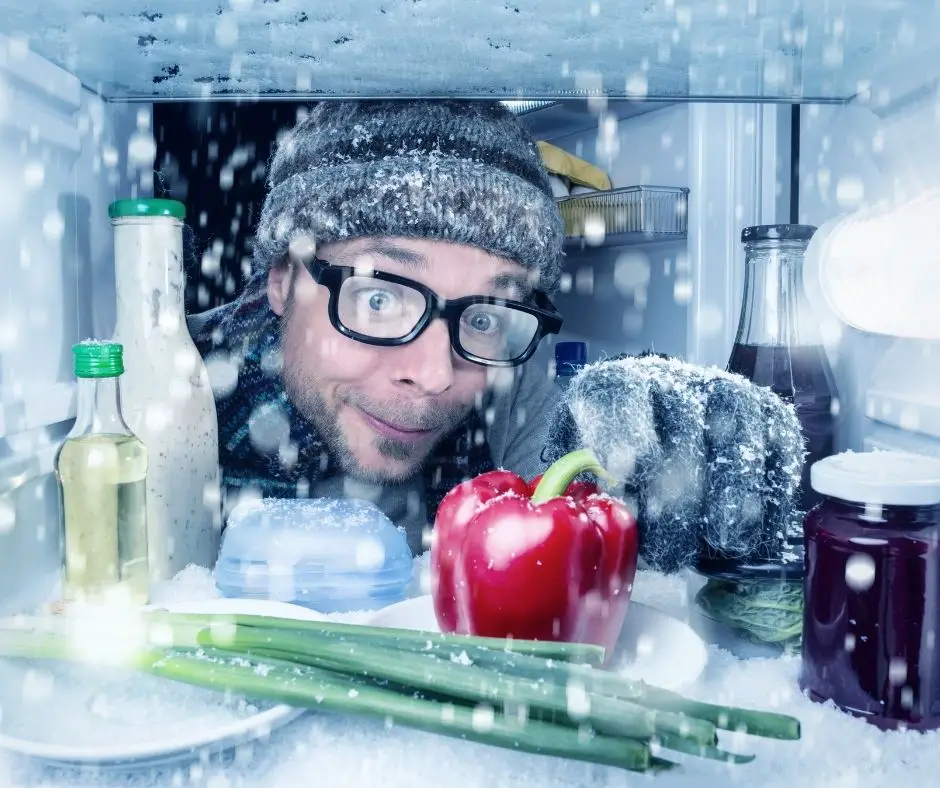
The cold winter months are a perfect time for a fridge to defrost. Just placing the food outside in the back garden or on a balcony is a great way to keep it fresh.
So, if you live in a cold place or like to plan far in advance, then this is a good option. Just keep in mind that you want the temperature outside to be below 40°F (5°C).
Check the weather forecast and schedule the best time to keep your food outside.
Although freezing temperatures and snow outside can keep your food frozen during the winter months, it is a good idea to keep it away from direct sunlight. Sunlight can cause the outer layers of food to thaw before freezing again, which isn’t good for perishable foods like meat or fish, nor is it safe.
Another thing to keep in mind when storing your food outside is that curious critters might come around if they see or smell food. Keep your food in a safe, animal-proof container and make sure nobody would mistake it for the free giveaway.
5. Use A Spare Fridge

Though this is not a luxury everyone has, but putting the food temporarily in another fridge freezer is the most straightforward solution.
You may need to do some rearranging so all the food can fit and there is no cross-contamination, but it is worth it to know your food will stay cold and safe however long the defrost may take.
You may still need to use some of the other storage methods above if all of your food doesn’t fit into another fridge or freezer. Or you can always ask your neighbor if you can leave that expensive piece of rib-eye steak in their fridge overnight.
6. Defrost And Cook
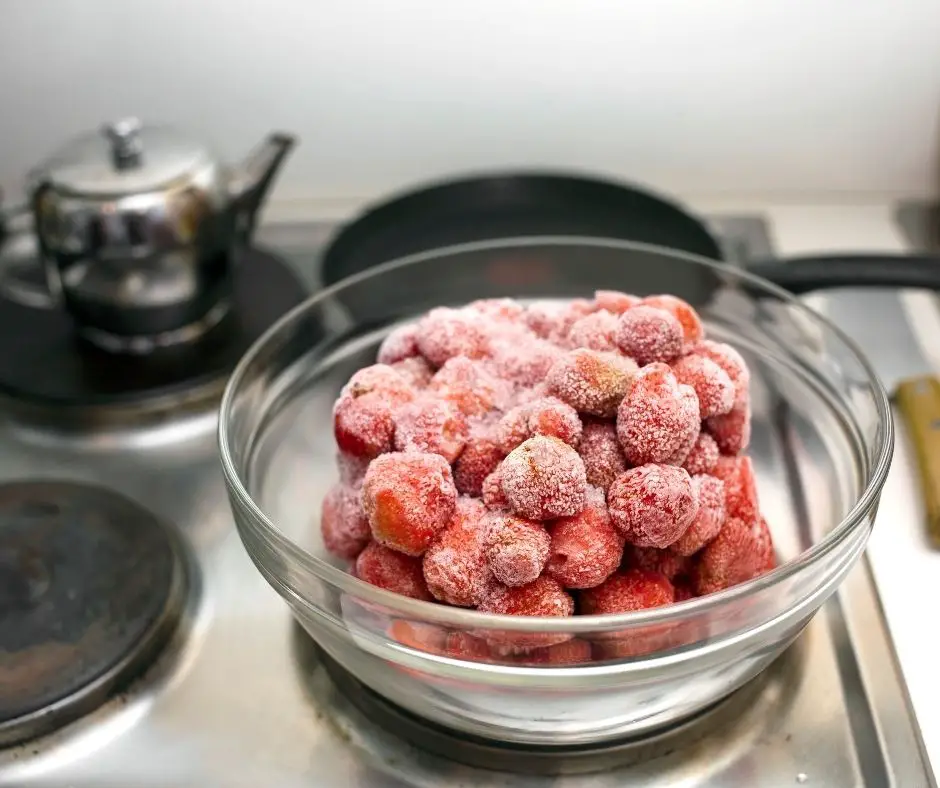
Instead of desperately trying to keep the food cold or frozen, you could plan a party or cookout for family and friends to enjoy the food. This way, you can start over and replenish your freshly defrosted fridge with all the fresh produce.
Did You Know? Forty-three percent of us are currently forgetting what frozen foods we have stored away. Only 15 percent of the people admit that we’re on top of what we put away in the freezer unit.
Check Out These 20 Innovative Food Storage Solutions To Keep Food Fresh Longer.
In Conclusion
It is essential to keep perishable food cold because bacteria can grow if it is not cold. This will ruin the food and make it unsafe to eat. So, if you can’t keep your food sufficiently cold for the duration of your fridge defrost, then you either need to cook it or throw it away.
